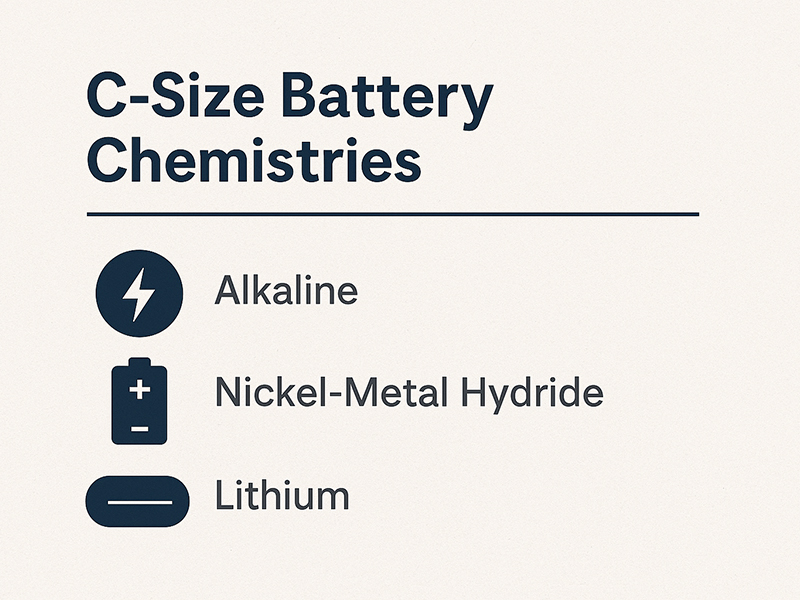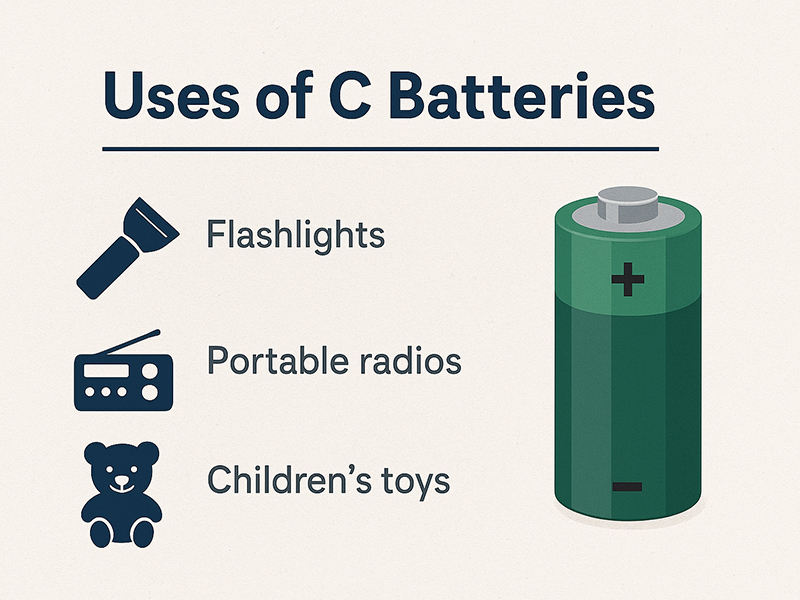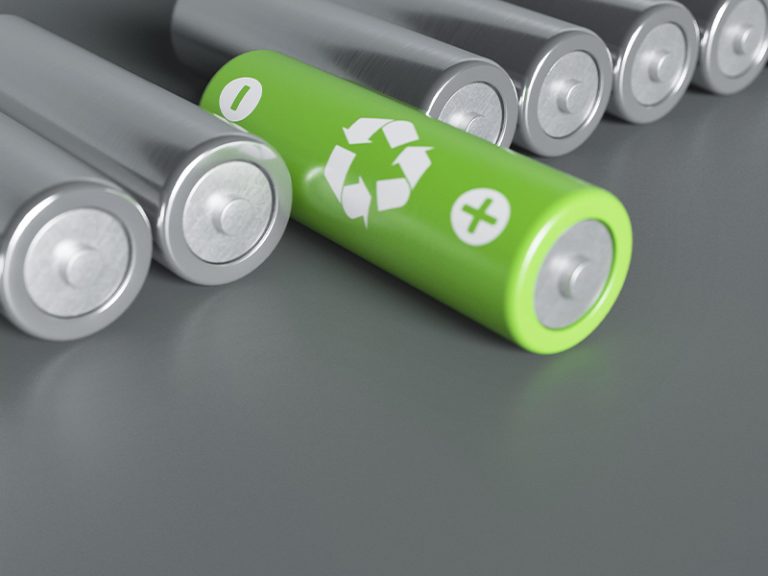What Are C Batteries?
C-size batteries (often called C cells) serve as a dependable medium-drain power source for devices needing longer runtime than AA or AAA cells while remaining smaller and lighter than D batteries. They typically deliver 1.5V nominal voltage and are available in several chemistries to match different usage needs.Want to understand the historical background and significance of C-type batteries? Check out our related article:Background and Importance of C-Type Batteries
In many applications where C batteries are used, reliable testing and charging systems are essential to ensure safety and performance.
Sinexcel offers advanced Battery Test Systems designed for accurate charge/discharge analysis and energy efficiency evaluation.
In this article, we will be discussing C type batteries holistically – highlighting their uses and specifications along with chemistry type. Readers will also get an idea about major differences between C type battery and other common battery types.
Specifications of C Cells:
Mechanical Specifications: C battery has standard cylindrical shape. Length of these batteries is 50mm (1.97in) and their diameter is 26.2mm (1.03in). Though, these batteries are larger than AA and AAA batteries, yet they are compact enough to be carried easily. Their size is one of the main reasons for their wide spread usage in different applications.
Weight of these batteries depends upon chemistry of concerned battery. For example, C battery with alkaline chemistry weighs around 65 grams. While NiMH type C battery weighs between 70 and 75 grams.
Electrical Specifications: C Cell has standard nominal voltage of 1.5V so it is also referred to as 1.5V C battery, sometimes. Anyhow, rechargeable C size batteries have slightly lower voltage of 1.2V. We will be highlighting voltages of different kinds of C batteries while discussing available chemistries in next session. Apart from 1.5 and 1.2V variants, C batteries come in 3V and 3.6V variants also, though very uncommon.
Cut-off voltage of C battery stands around 0.8 to 0.9V which means, during discharging phase, it supplies minimum 0.8 to 0.9V before getting fully discharged and cutting-off.
Capacity of a C battery is also dependent upon chemistry of the battery, just like voltage. For example, rechargeable NiMH C cell can offer 2500 to 6000 mAh after each charge making this cell suitable for devices which are used frequently but their usage is not of critical importance. On the other hand, alkaline C cell has capability to store 6000 to 8000 mAh. Their larger capacity makes them ideal for applications which drain higher amount of energy.
C-Size Battery Chemistries
In markets, you can have primary as well as secondary C type batteries. Primary batteries are throw-away or disposable batteries which are to be discarded after their stored energy is dissipated once. Secondary C cells have slightly lower capacity than primary ones, but their life cycles are quite much making them cost effective. Here, some common chemistries for C type battery are discussed.
Alkaline C Battery:
Alkaline C batteries operate at 1.5V nominal voltage with their capacity falling between 3000 and 8000 mAh. Alkaline batteries are non-rechargeable type batteries so each battery needs cautious disposal after a single use. These batteries are preferably used for devices which are run for short term at medium energy. Typical usage of alkaline type C batteries is found in flashlights, radios, doorbells, toy cars, toy trucks, remote controllers etc.
Lithium C Battery:
Lithium chemistry C battery also gives 1.5V nominal and has very flattened discharge curve. This is also a primary type battery. Its shelf life and capacity are usually higher than alkaline variants. Lithium C batteries are more rugged and can operate well at extreme temperatures also. Owing to these characteristics, these batteries are used in specialized devices like cameras, emergency lights or other emergency backup devices, speakers etc.
Nickel-cadmium (NiCd) C Battery:
Nickel cadmium C battery is a rechargeable or secondary type of battery. Its nominal voltage is 1.2V. Its capacity is slightly lower than alkaline and lithium variants standing around 2800mAh and price is little higher. Anyhow, its rechargeability feature offsets these aspects. This battery can tolerate temperature extremes so it can be used in a variety of critical applications including fire alarms, emergency lights, electric drills, screwdrivers, and wrench. It must also be noted that, due to presence of cadmium, use of NiCd batteries is not appreciated. Their disposal adds toxic waste to environment and poses hazardous outcomes in long run.
NiMH (Nickel-Metal Hydride) Rechargeable C Batteries:
C type batteries with NiMH chemistry are rechargeable with 1.2V nominal voltage and energy capacity larger than that of NiCd. These batteries can be recharged hundreds of times which also compensates for their higher initial cost. These batteries are safe, nonetheless it is needed to charge and store these batteries properly to avoid leakages or other kind of damage. Memory affect of these batteries is also minimal so their capacity is not diminished much during their lifetime. These batteries are suitable for low drain devices like gaming consoles, camping lights, audio devices, mini electronic devices etc.For rechargeable NiMH C batteries, accurate cycle testing is essential. Sinexcel’s IT Battery Test System supports precise control for laboratory analysis and quality verification.
Common Uses of C Batteries
C batteries are a good choice for those devices which require a steady supply of energy for extended periods of time. Their medium size makes them quite practical because
- These cells are not too small to run out quickly like AAA or AA batteries, and
- not too large and heavy like D type cells
Their medium size along with enough capacity is the reason behind their widespread use in everyday tools and devices, and more specialized equipment. Specialized uses for each chemistry of C cells have already been mentioned. Here, we will be shedding light on those applications in detail regardless of chemistry.
Flashlights and Lanterns
C battery is a common choice for flashlights and lanterns, especially those used for hiking, camping, and emergency situations. These devices need reliable kind of supply and bright light for long hours. Good capacity of C batteries helps fulfil these requirements without frequent replacements.
Boomboxes and Portable Radios
Another use of C type batteries is in boomboxes and portable radios. Like flashlights, musical devices also need good amount of current supply to play clearly for longer periods, and C cells are a good supply option to provide steady current for such operation.
Toys
Now markets are flooded with a large variety of toys including remote-control (RC) cars, large playsets, and interactive robots. Since toys often use a lot of power during play, C cells give them longer runtimes compared with smaller batteries. Moreover, toy batteries might experience deep discharge and rough handling so appropriate selection of chemistry (e.g NiMH) will serve well for such use.
Musical Instruments
Some specialized type of electronic musical instruments, like keyboards and drum machines, also make use of C batteries. Musicians prefer them because they provide stable power and reduce interruptions.
Emergency Devices
C batteries are also important in safety or emergency equipment such as beacons, sirens, and medical devices e.g. nebulizers (Duracell, 2024). Their dependability in emergencies makes them very valuable.
Resultantly, we can say that a good balance of portability, capacity, and versatility explains the reason behind C batteries being a trusted choice for multiple applications in current setting.
FAQs about C Batteries
What is the output voltage of a C battery?
A standard C sized battery has nominal output voltage of 1.5V when it is fully charged and fresh. Rechargeable C batteries like NiCd and NiMH batteries have slightly lower output voltage of 1.2V. Some specialized and uncommon C batteries come with 3V and 3.6V nominal voltage.
Is there any difference between C and D type batteries?
Batteries are named after their chemistries and sizes. Chemistry of C and D type batteries could be same. Anyhow, these batteries differ from each other on the basis of size. D cell is little larger and bulkier than C cell. So, if a device is designed such that a C cell could fit in its supply slot, then you will not be able to fit a D cell into it and vice versa.
Are C batteries rechargeable?
Rechargeability of a battery depends upon its chemistry. So some chemistries of C cell are rechargeable and some are not. It is already discussed in detail that NiCd and NiMH are rechargeable variants of C type cell, while alkaline and lithium type are not.
How many types of C batteries are available in the market?
On a larger canvas, C type batteries could be rechargeable and non-rechargeable or secondary and primary type batteries respectively.
How are C cells related to AA and AAA cells?
AA and AAA batteries are also portable kind of batteries. Anyhow, AA and AAA are much smaller in size and thus capacity, but C type batteries have larger size and capacity than these two.
Why are C batteries still widely used today?
Because they offer a balance of capacity and size. For a deeper explanation, see our article:Background and Importance of C-Type Batteries.
Conclusion
Whether you are testing C batteries for consumer products or laboratory research, Sinexcel provides professional low-voltage testing solutions.Learn more about our Milliampere-Level Test System designed for precision testing of 1.2V–1.5V cells.
C batteries are still very important for devices that need medium power and steady performance. They are built to offer a good mix of runtime, size, and portability. With capacities as high as 8,000 mAh, rechargeability feature, and different chemistry types available; C type batteries can be used in a variety of products like radios, flashlights, some medical equipment, and toys.
In comparison with smaller AAA or AA batteries, C batteries last quite longer and are capable of providing more energy. When compared with D type batteries, they are light in weight and easy to carry and handle. Many C batteries come in chemistries which are rechargeable making them more eco-friendly and cost-saving over time.
Upon knowing about detailed chemistries, features, and uses of C type batteries; you can choose the right battery for your needs. You will not only notice improvement in device performance but also reduce functioning cost by helping batteries last longer in daily applications.




